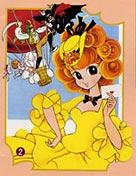
|
|
List of Girl's Mangaka and Examples of Visual Images:Twenty Major Mangaka Who Contributed to the World of Shojo Manga
|
Visual Examples |
Artist's Background and Brief Information |
Visual Examples |
Artist's Background and Brief Information |
|
Ribbon no Kishi (1953) |
1Osamu Tezuka (11/1928 – 3/1989), Osaka, Japan He is well known as the God of contemporary Japanese manga and his influences on the manga world in Japan is immeasurable. |
Ryujinnuma |
2Shotaro Ishinomori (1/25/1938 – 1/28/1998) Miyagi He is a successful magnaka for boy’s and girl’s manga. Especially, he contributed to the development of a new composition in manga |
|
3Tetsuya Chiba (1/11/1939), Tokyo He is well knows as one of the most successful diverse boy's mangaka, but he started as a girl's mangaka. |
Gin no Kinoko (1961) |
4Akira (Reiji) Matumoto (1938) He is a great contributor to the development of Japanese manga animation which gave children hope and dreams. |
-
Girl's manga were first depicted by female mangaka in the 1950s. Watanabe, Maki, and Mizuno are the most successful girl's mangaka who visualized girls' dreams and desires in their graphic novels.
-
Many female managaka followed after their successes as girl's mangaka and with the arrival of 24-gumi (female mangaka who were born around 1949 and contributed the development of the style of girl's manga), the world of girl's mangaka flourished with diverse subgenres of SciFi, Love, History, Adventure, and so on with visual inventions as graphic novels in 1970s.
-
These female mangaka continue to depict and develop manga in response to readers' expectations and their own aesthetics as graphic/visual novelists.
-
The movement still continues as the influences are spread all over the world as translated comics, animation, and other merchandise at the beginning of the 21st century.
Girl's Manga by Female Mangaka
Visual Examples |
Female Artist's Background |
Visual Examples |
Female Artist's Background |
Garasu no Shiso |
5Masako Watanabe (1929), Tokyo She is one of the first female mangaka who contributed
to the development of shojo manga after W.W. II. She is
still highly active, depicting diverse themes through
her manga. |
Maki no Kuchibue |
6Miyako Maki (7/29/1935), Kobe Her visual style highly infuenced to the girl's manga. The most popular doll in Japan, Rika, is created as an ideal image of girl based on her characters. |
Honey Honey no Stekina Bouken |
7Hideko Mizuno (3/29/1939), Shimonoseki, Yamaguchi She is the first female mangaka who successfully depicted majestic dramas based on historical and mythological stories. |
Akiko (1986) |
8Machiko Satonaka (1/24/1948), Osaka The diverse topics based on women's drama that she creates continue to impress female readers. She also contributed to the development of Lady's Comics for mature female readers. |
Versailles no Bara |
9Riyoko Ikeda (12/18/1947), Osaka Her magnificent love story based on the French Revolution became a big phenomenon in Japanese society in the 70s. This became a big hit play by Takaraduka (an all female performance group). |
Illustration for the cover for a
book of Asuka |
10Suzue Miuchi (2/20/51), Oosaka She is well known as a mangaka of long spectacle dramas. Garasu no Kamen (Mask of Glass), an ongoing serial manga started in 1976 about a girl who grows as an actress, is a good and great example of her work. |
Suna no Shiro |
11Yukari Ichijyo (9/19/49), Okayama When she made her debut on the girl's manga world, readers were impressed by the sophisticated visual techniques and images. Since then, she has maintained the high quality in her manga. |
Kaze to Ki no Uta (1976-84) |
12Keiko Takemiya (2/13/1950), Tokushima The theme of boy's love in her manga opened up a new field in girl's manga and it sparked off the YAOI (boy's love) boom in the comic market in Japan in the 80s. |
Hyakuoku no Hiru to Senoku no Yoru |
13Moto Hagio (5/12/1949), Fukuoka Her philosophical manga cover many themes and genres. Her created manga world continues to attract big fans regardless of genders. |
Hiizuru tokoro no Tenshi |
14 Ryoko Yamagishi (9/24/1947), Hokkaid0 One of the most successful stories among her many works is a historical drama based on one of the most famous historical Japanese, Shotokutaishi, who introduced Buddhism officially in Japan in the 7th century. |
One Zero |
15Shio Sato (12/6/1950), Miyagi Compared to other female mangaka, she does not produce many stories regularly, but she has many big fans due to her sophisticated use of the Japanese language in her mysterious manga world. |
Banana Fish |
Akimi Yoshida (8/12/56), Tokyo She is probably the most famous female mangaka in the US with her NY gang story "Banana Fish" (translated into English), which contains elements of boy's love. |
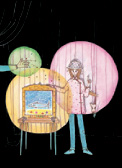 |
17A-ko Mutsu (2/15/54), Kitakyushu City She was the originator and leading proponent of the
“otometic” type of love story in girls’
manga, a type of innocent, understated girls’ love
stor. She became the number one shojo mangaka in Ribbon
in the 1970s. |
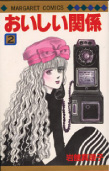 |
18Mariko Iwadate Her work has been called “Iwadate’s World”
due to the fantasy element of her gentle and soft pastel
pictorial world and also with her cold observations of
the realities of youth. |
Itumo Pocket ni Syoppan (1980) |
Fusako
Kuramochi (5/14/55), Tokyo |
Youmihenjyoyawa (1995 - present) |
Reiko
Okano (6/24/1960), Ibaragi |
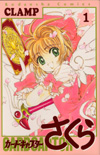 |
21CLAMP is a collaborative group of four women mangaka: Satsuki Igarashi, Ageha Okawa, Tsubaki Nekoi, and Mokona. As their roles vary with each project, their visual style can be dramatically different from project to project, and their work is surprisingly successful with a wide-ranging audience |
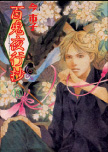 |
22 Ichiko Ima She is fond of the traditional Yokai in Japanese folk
tales and often refers to these as well. In the story
Hyakki Yakosho (100 Demons), the protagonist Ritsu, who
can communicate with Yokai, gets involved in tough problems
that Yokai ask him to solve. |
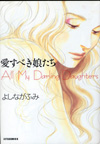 |
23Fumi Yoshinaga (1971) Tokyo One of the most successful boy's love depicts the love between males, but weaves in more complicated plots. "I want to depict people who try very hard but don't make it. In boy's magazines people who try hard always win. That is not what I want. |


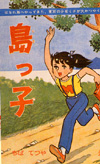 Shimmkakko
Shimmkakko













